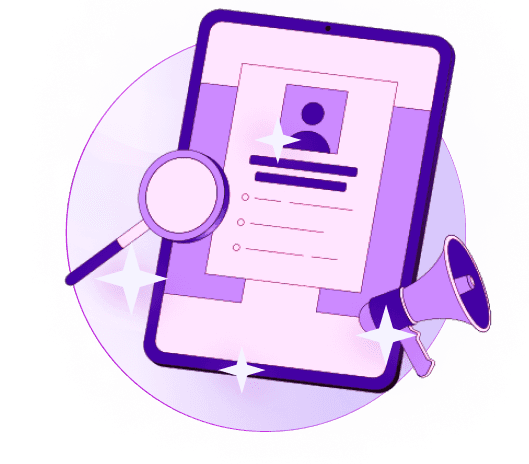Blogs
Articles

How to Build an AI Agent That Actually Works In 2025
AI agents can now tackle complex, multi-step tasks on your behalf without supervision. The real question is: how do you create an AI agent that adds genuine value?
This piece will guide you through the core elements of building AI agents that work. We'll cover everything from model selection to tool design and evaluation loops. This knowledge applies whether you're creating your first LLM agent or enhancing existing systems.
Let's take a closer look at building an AI agent that delivers results in 2025 and beyond.
What is an AI agent?
An AI agent works as an autonomous software system that sees its surroundings, makes decisions, and acts to reach specific goals without constant human guidance. These smart systems do more than respond to prompts. They actively design workflows, use available tools, and run multi-step tasks by themselves to help users and other systems.
AI agents combine the power of large language models (LLMs) with specialized programming to interact with external environments. This mix helps them handle complex tasks from software development and IT automation to customer service and business optimization.
AI agents have several unique features:
Autonomy: They work independently and make decisions with minimal oversight
Goal-oriented behavior: Agents chase objectives set by humans and find the best way to achieve them
Adaptability: They learn from interactions and change their approach based on feedback
Tool utilization: Agents access external tools and information to boost their capabilities
What are the basics of building AI agents?
Success in building an AI agent depends on understanding several basic components that create an intelligent system together. The system's effectiveness starts with a clear purpose and specific processes that would benefit from agentic AI.
Data quality needs attention before development begins. The 'garbage-in-garbage-out' principle shows how an AI agent's performance associates with its training data's quality and relevance. Organizations should set minimum data standards early and use proper data management practices to break down silos and ensure efficient access protocols.
AI agents that work share three core components:
Architecture - The base the agent operates from, which may be physical, software-based, or a combination
Agent Function - Describes how collected data translates into actions supporting the agent's objective
Agent Program - The implementation of the agent function that lines up business logic with technical requirements
Development teams should think about whether to customize pre-built agents from vendors or build from scratch. This decision depends on in-house AI talent, model training expertise, cost considerations, and data quality. Each approach has its benefits - customizing existing agents needs less expertise but offers less control, while building from scratch gives complete customization but requires more resources.
What is an LLM agent and how is it different from a chatbot?
LLM agents show the rise of AI systems that use large language models to solve problems through reasoning and autonomous action. Traditional LLMs just follow defined instructions, while LLM agents can choose their tools and adapt their approach based on the situation.
LLM agents work through several key parts that function together seamlessly:
A "brain" (the LLM) that serves as the central coordinator
Memory modules that store both short-term actions and long-term context
Tools that execute specific tasks and access external systems
Planning capabilities that break complex problems into manageable steps
The agent's approach is different from chatbots in several key ways:
Autonomy level: Chatbots respond only when prompted, while LLM agents act on their own based on internal goals or triggers.
Task complexity: Chatbots handle simple interactions in one session. LLM agents manage complex tasks across multiple sessions.
Memory capabilities: Chatbots remember things only during a session. LLM agents keep both short and long-term memory.
Tool utilization: Chatbots depend on limited, predefined integrations. LLM agents choose and use tools as needed.
Decision-making: Chatbots follow fixed scripts with minimal changes. LLM agents use reasoning, planning, and self-reflection to improve over time.
When should you build an AI agent instead of a workflow?
The choice between an AI agent and a traditional workflow isn't about jumping on trends. You just need to match the right solution to your specific business challenge. Experts point to three key scenarios that tell you when to build an AI agent instead of a traditional workflow.
Scenario 1: When Decisions Grow Exponentially
Traditional automation fails when potential decisions multiply exponentially with each new factor. You could technically define enough "IF/ELSE" conditions to automate anything. The task of mapping all possible variations becomes impossible in practice. To name just one example, a B2B software company might start with simple rules to score leads but quickly finds that real lead quality depends on hundreds of subtle, interconnected factors.
Scenario 2: When Decisions Rely on Meaning, Not Structure
AI agents shine when business problems need semantic understanding rather than just processing structured data. Take multi-channel customer relationship management where interactions happen across email, LinkedIn, support tickets, and calls. Traditional automation handles each interaction separately. An agent connects these dots across time and channels to extract meaningful insights.
Scenario 3: When Optimization Paths Emerge from Context
Some processes resist upfront optimization because the best approach only becomes clear as information comes in. Agents can adapt their approach based on what they find during execution in these situations.
Core Components of a Functional AI Agent
Building an effective AI agent depends on mastering four critical components that create its functional foundation. Each element plays a unique role that determines your agent's performance in real-life applications.
Choosing the right model for your use case
The foundation of any AI agent begins with model selection. Start by establishing a performance baseline with the most capable model you can access, then optimize backward. Set up evaluations to measure accuracy against your specific goals. Meet your accuracy targets with the best models available. The final step optimizes cost and latency by replacing larger models with smaller ones where performance stays acceptable. Not every task needs the most powerful model—simpler retrieval or classification tasks often work well with smaller, faster models.
Designing tools for action and data retrieval
Tools expand your agent's capabilities beyond reasoning into action. Effective AI agents need three categories of tools:
Data tools: Enable retrieving context from databases, documents, or web searches
Action tools: Allow interactions with external systems like updating records or sending messages
Orchestration tools: Enable agents to work together in multi-agent systems
Each tool should have standardized definitions, complete documentation, and reusable components to improve discovery and prevent duplicate implementations.
Writing clear and structured instructions
High-quality instructions are the backbone of any LLM-powered agent. Clear directives reduce ambiguity and improve decision-making throughout your agent's workflow. Create LLM-friendly routines from existing documentation whenever possible. Complex tasks should be broken down into smaller, clearer steps. Define explicit actions for each step to minimize misinterpretation. Edge cases need conditional branches to handle unexpected situations.
Managing agent memory and state
Memory helps AI agents maintain context across interactions. Effective memory management has these key aspects:
Short-term memory keeps recent inputs through rolling buffers or context windows. Long-term memory preserves information across sessions using databases, knowledge graphs, or vector embeddings. The agent's episodic memory recalls specific past experiences. Semantic memory contains structured factual knowledge. Procedural memory handles complex sequences without explicit reasoning.
Your agent's architecture, intended use case, and required adaptability will determine the implementation approach.
Orchestration and Multi-Agent Patterns
The way AI agents work together depends on system design choices that affect how well they perform, grow, and stay reliable. Moving beyond single agents requires a solid grasp of these patterns to build systems ready for ground challenges.
Single-agent vs multi-agent systems
A single-agent system puts one autonomous entity in charge of all tasks. These systems shine when tasks are specialized and well-defined, which keeps coordination simple. Multi-agent systems take a different approach by having several specialized agents work together toward common goals.
Here's what sets them apart:
Resource utilization - Multi-agent systems usually work better than single agents because they tap into a bigger pool of shared resources and can process things in parallel
Failure resilience - A single agent's failure brings down the whole system. Multi-agent systems keep running even if some agents stop working
Optimization potential - Multi-agent systems let agents share what they learn instead of each one learning the same things over again
Scalability - Single agents get overwhelmed as tasks grow more complex. Multi-agent systems spread out the workload
Manager and decentralized agent patterns
AI systems typically follow two main approaches: centralized (manager) and decentralized patterns.
Centralized networks use a master agent that knows everything happening in the system. This master connects all other agents and watches over their communication. The system can optimize resources better and predict behavior more easily. The master reviews what each agent does best and assigns tasks accordingly.
Decentralized networks work differently. Agents talk directly to their neighbors without going through a central hub. This setup removes any single point of failure and lets processes run in parallel. These systems often use group decision-making through voting, auctions, or letting agents decide based on what they know locally.
When to split tasks across agents
You should think about splitting tasks among multiple agents when:
Tasks have many moving parts (like catching financial fraud through multiple checks)
The environment keeps changing (like rescue robots working together)
Several agents want the same limited resources
Problems need different types of expert knowledge
Tasks can run at the same time
All the same, note that multi-agent systems bring their own challenges. They need more computing power and take more work to develop. You should review if spreading out the work is worth these extra complexities in your specific case.
Build and train your own AI agent With Persana
Your AI agent needs proper training and implementation after building its foundation. Persana provides a complete platform to build and fine-tune AI agents that work well in real-life environments.
Setting up guardrails and moderation
AI agents need resilient infrastructure to operate safely and responsibly. Start by adding appropriateness guardrails that filter toxic or harmful content before users see it. Add hallucination guardrails next to stop factually incorrect information. Regulatory-compliance guardrails help meet specific industry requirements. Companies like ING have seen an 85-90% reduction in content-related incidents by using dedicated AI moderation frameworks.
Using evaluation loops and feedback
Your AI agent's reasoning and accuracy depend on good feedback mechanisms. Agents should store solutions to previous challenges in a knowledge base for iterative refinement. Clear evaluation goals and metrics come first, followed by datasets that mirror real-life scenarios. Testing your agent in different environments helps track its performance step by step. This informed approach lets you monitor specific metrics like task completion rates and user satisfaction scores.
The right time for human intervention
Complex scenarios still need human oversight. Set checkpoints before agents take actions that could affect many users, like sending mass emails or financial transactions. Users should have the ability to stop operations smoothly when needed. Early deployment stages need this approach to find system failure points, create evaluation cycles, handle risky operations, and manage cases beyond failure thresholds.
Monitoring performance post-deployment
Your agent's effectiveness needs constant monitoring after launch. Track up-to-the-minute data on key performance indicators, error rates and resource usage. Standard metrics don't tell the whole story—70% of customer experience leaders say AI's effect is sort of hard to get one's arms around with regular tools. Focus on objective, informed metrics that spot moments when customers show confusion or emotional triggers. These insights help make precise improvements to your agent's optimized workflows.
Conclusion
Building an AI agent that works in 2025 needs more than just the latest technology. You need to think over multiple factors carefully. This piece explored the basic building blocks that make AI agents powerful tools. These tools can handle complex, multi-step tasks on their own.
The difference between regular workflows and AI agents has become crystal clear. AI agents shine when decisions get complex, when understanding meaning matters more than processing structure, and when solutions need to adapt to context. Your success depends on picking the right approach based on your business challenges.
Of course, proper safety measures and evaluation methods will give your AI agent the ability to work safely and get better over time. Even the smartest agent might fail or cause problems without these safeguards in place.
Persana.ai offers the detailed platform you need to build, train, and deploy AI agents that deliver ground results in complex business settings.

Create Your Free Persana Account Today
Join 5000+ GTM leaders who are using Persana for their outbound needs.
How Persana increases your sales results
One of the most effective ways to ensure sales cycle consistency is by using AI-driven automation. A solution like Persana, and its AI SDR - Nia, helps you streamline significant parts of your sales process, including prospecting, outreach personalization, and follow-up.



